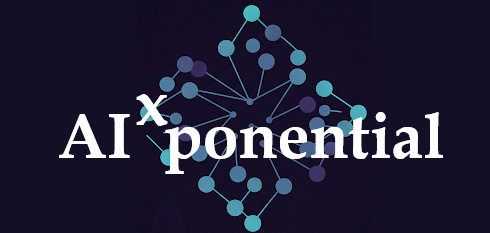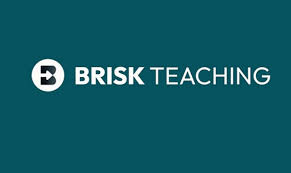Brisk: A Teacher's AI Assistant - Streamlining Lesson Planning and More
The EdTech landscape is rapidly evolving, with AI playing an increasingly central role. As a product developer constantly evaluating new tools, I recently took a close look at Brisk, a Chrome extension designed to alleviate some of the common burdens faced by teachers. This article details my findings and explores how Brisk fits within the broader context of AI in education, particularly in relation to AIxponential's mission.
AIxponential's Guiding Principles
Before diving into Brisk, it's important to frame this review within the context of ethical and accessible AI development. At AIxponential, we believe AI has the power to revolutionize education, but only if implemented responsibly. Our mission is built on these pillars:
- Empowerment: Providing individuals with the knowledge and skills to utilize AI effectively.
- Ethics: Promoting the development and deployment of unbiased AI systems.
- Access: Expanding access to AI education and resources for everyone.
- Collaboration: Fostering a community where knowledge is shared, and the future of AI is shaped collectively.
This review will consider how Brisk aligns with these principles.
Brisk: Simplicity and Speed for Teachers
Brisk is laser-focused on serving teachers. Its core strength lies in its simplicity and ease of use. I found the extension remarkably intuitive, requiring virtually no learning curve. This "low inertia" approach is key to adoption, mirroring the success of tools like Slack, which often gain traction within organizations through individual user adoption before becoming officially sanctioned.
Brisk is designed to support teaching across a wide range of subjects. It's not specialized for a particular discipline, which increases its versatility. One critical aspect is the Tech Complexity. This is low and could be built fairly easily.
What Can Brisk Do?
Brisk offers several features, but I focused primarily on its lesson planning capabilities. To test it, I used the Brisk extension on this article about prompt engineering: https://ai.gopubby.com/prompt-stores-prompt-engineering-for-the-enterprise-60a61167f491.
The process was incredibly straightforward:
- Click the Brisk Extension button.
- Select "Create," then "Lesson Plan."
- Brisk integrates seamlessly with Google Docs, generating a draft lesson plan almost instantly.
Here's the resulting lesson plan: https://docs.google.com/document/d/1sAxVxoOJi4iW1M-4j0Hs2GA9WUtWNjUwdEplPAEtw0U/edit?tab=t.0
While the generated plan isn't fully polished and ready for immediate classroom use, it provides a solid foundation. It creates a useful outline and populates it with high-level information, saving teachers significant time and effort in the initial stages of lesson planning.
I also tested Brisk's ability to create a Science Lab document from the same article: https://docs.google.com/document/d/1_w2fR7FJrDwBctSoRHBvjbdWhP1j8bB29XWMkQ46mes/edit?tab=t.0
The result was strikingly similar to a quick-and-dirty LLM experiment I conducted with students, where we tested different local LLMs (see https://chat.webllm.ai/). This confirmed Brisk's potential for rapidly generating practical, usable lab activities.
Observations and Questions
- "I'm Feeling Lucky" Button: The ease of generating content with Brisk inspired me to consider a similar "I'm feeling lucky" style button for my own lesson creation tools, focusing on simplifying the initial interface for course description generation.
- Sharing and Discovery: Brisk currently lacks robust features for sharing and discovering lesson plans created by other teachers. This raises a crucial question: How important is collaborative sharing and discovery for teachers seeking to leverage existing resources?
- Output Format: Brisk outputs to Google Docs, which is convenient for individual teachers. However, a website output option might be more appealing for organizations or institutions creating course materials.
- Teacher Understanding of AI: While teachers may not need to understand the inner workings of Brisk, a basic understanding of prompt engineering and AI's capabilities could enhance their use of the tool. This aligns with AIxponential's emphasis on empowerment through knowledge. Resources like the course at https://www.gse.upenn.edu/academics/center-professional-learning/introducing-artificial-intelligence-ai-classroom could be valuable in this context.
The EdTech Spectrum: From Hand-Crafted to Rapid Generation
Brisk occupies an interesting position in the EdTech spectrum. At one end, we have highly polished, hand-tailored solutions like Khanmigo, Google's AI-powered educational tools, and MIT's initiatives. These represent significant investments in development and curation. At the other end, we have tools like Brisk, which prioritize speed and ease of use, enabling rapid generation of educational content.
The AIxponential approach, with its focus on composable lessons, interactive elements, data collection, and AI-assisted grading, falls somewhere in between. It aims to strike a balance between the polish of high-end solutions and the accessibility of rapid generation tools.
Conclusion: A Valuable Tool for Time-Strapped Teachers
Brisk is a valuable tool for teachers seeking to streamline their workflow and leverage AI to save time. Its simplicity, speed, and intuitive interface make it a compelling option for individual adoption. While it may not replace the need for carefully curated, high-end educational resources, it offers a powerful way for teachers to quickly generate lesson plans, lab activities, and other materials, freeing up their time to focus on what matters most: engaging with their students. Brisk's focus on individual teacher empowerment aligns well with AIxponential's mission to make AI accessible and beneficial to all. It's a strong example of how AI can be practically applied to improve the daily lives of educators. Further feedback and exploration of its revenue model would be valuable next steps in evaluating its long-term sustainability and impact.

